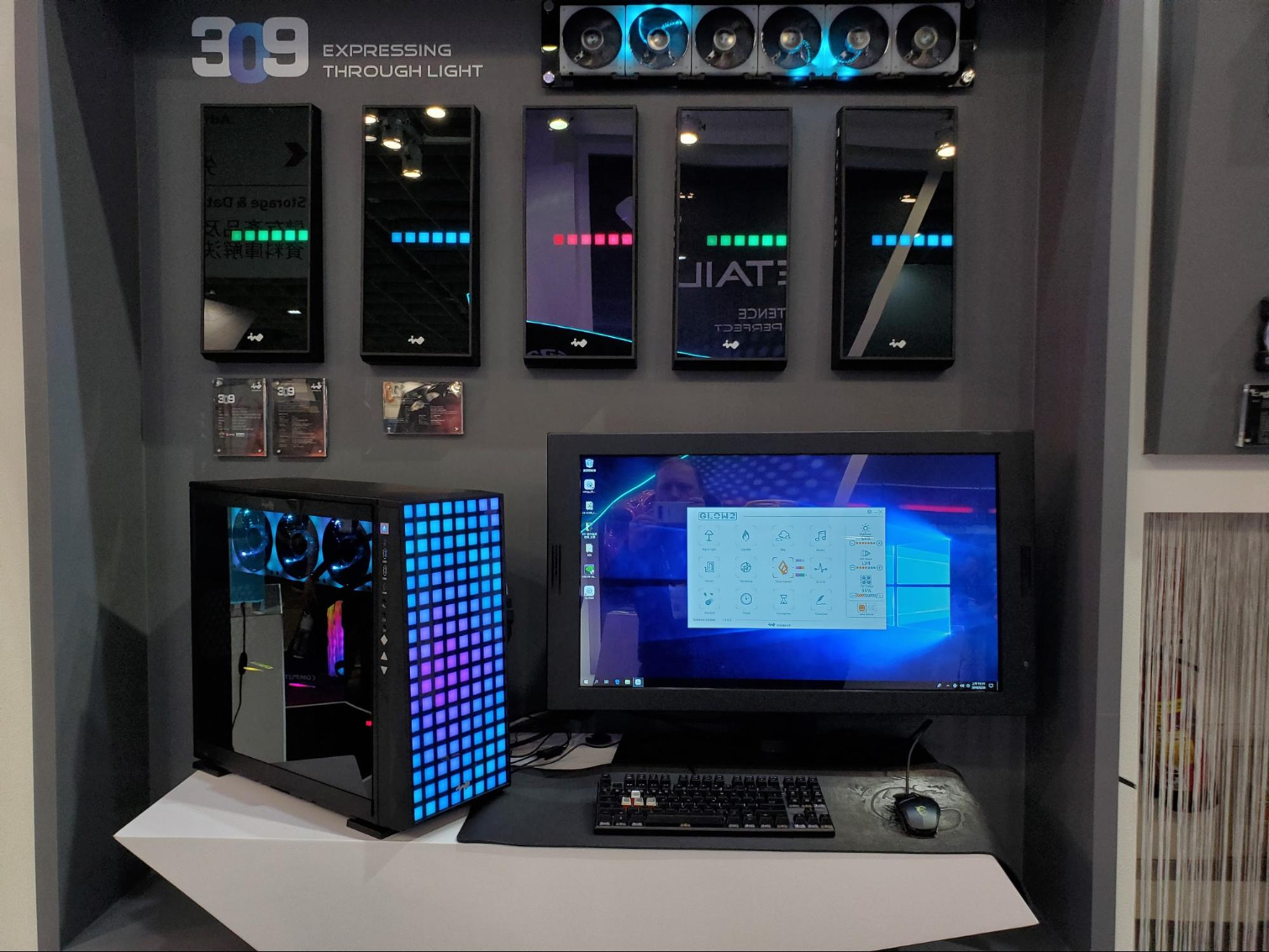In Win’s Crazy Computex Cases: Cloth, a Chrysalis, and 144 Addressable RGBs
Taiwanese case maker In Win delivers interesting, eye catching cases every year at both CES and computex. This year is no different, with the company trotting out a budget-priced cloth-wrapped plastic case in its Alice concept, a $4,000 one-of-a-kind made-to-order Yǒng Signature Series, and a slick stained-glass-inspired 309 chassis with 144 addressable RGB LED pixels up front, controlled via some slick software.
Yǒng: 9th Generation, Limited-Edition Signature Chassis
Starting off in the stratosphere (at least when it comes to pricing) is the company’s 9th-generation Signature Series, or Yǒng, an organic-looking chrysalis-like open-air case that the company says is built to order and can accommodate pretty much any build, up to and including massive Intel-based boards like the ROG dominus. The Yǒng is 3D-printed using ABS plastic in a color of your choosing.



The company says they will build out a website that will let you customize the case and that, combined with the printing, finishing, and materials cost, means the Yǒng is going to be expensive--around $4,000. Sure, that’s absurdly expensive, but a company rep told us that’s actually about $500 less than the aluminum Z-Tower that the company launched here last year.
Alice Concept Chassis
Next up, at the opposite end of the pricing spectrum is the Alice concept, which the company says is inspired by the eponymous protagonist of Wonderland. This case, which the company says will cost as little as $40, will have a frame built of “sturdy ABS” plastic, and be wrapped in fabric.



Looking more like a lamp or a clothes hamper than a traditional case, the company said they created it in response to customers asking for a light case for easy transport for LAN parties or just around the house. The cloth covering allows for softer aesthetics and playful designs, while the open frame means airflow shouldn’t be an issue. But we’re not thrilled at the lack of any top or front-mounted ports.
In Win 925: A Really Big “Little Brother”
The new 925 was designed as the “little brother” of the massive 928, which we saw at CES earlier this year. This smaller variant doesn’t support Intel’s extreme Xeon W platform like its bigger brother, but it’s still a monster of aluminum and glass that supports up to E-ATX motherboards and will dominate any desk with ease.




To shave the price down from the $900 928, aside from shrinking the chassis size a bit, the company did away with the diamond-cut edges, and used plastic on the corners of the tempered-glass sides, rather than metal. That helps the 925 land at a more reasonable $450-$500. But make no mistake: This case looks and feels like a solid, premium beast.
Get Tom's Hardware's best news and in-depth reviews, straight to your inbox.
In Win 309: A Slick, Pixel-Lovers Deam Case
Next up, and perhaps most interesting, is the In Win 309, a sleek tempered-glass case with 144 addressable RGB pixels up front, that can be controlled and customized via some easy-to-use software. The lights can even react to music or sound thanks to a built-in microphone.






Based on the similar (but less-refined) 307 chassis that we saw last year, the 309’s front light panel integrates better with the rest of the chassis, while foregoing the soft, diffused light of the original for a glossy, darker look that the company says was inspired by stained glass.
The ATX case will include three of the company’s EGO fans, which incorporate 16 RGBs each themselves, in a silicone frame, and radiators can be mounted in the top, bottom, and rear, along with up to seven fans.
There’s also a USB-C 3.1 Gen2 port on the side, along with a pair of USB 3.0, audio jacks, and dedicated lighting controls. But really, this case is all about the pretty lights, and we know of no other case like it. If you like pixelated designs or you’re just after a case that can change with your mood with just a few clicks, we think you’ll find the $200-$225 estimated asking price fairly reasonable. Just make sure to save enough money for a pair of dark sunglasses for your friends who aren’t all about the RGBs.
After a rough start with the Mattel Aquarius as a child, Matt built his first PC in the late 1990s and ventured into mild PC modding in the early 2000s. He’s spent the last 15 years covering emerging technology for Smithsonian, Popular Science, and Consumer Reports, while testing components and PCs for Computer Shopper, PCMag and Digital Trends.
